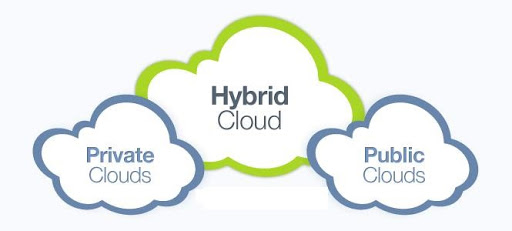Today, cloud adoption is no longer a question of preference but an obvious choice. That said, there are numerous options available for companies to connect enterprise applications to the cloud infrastructure. This has led companies to focus on creating the right mix of public and private clouds to increase efficiency and cost-effectiveness.

A lot of enterprises are showing their interest in hybrid cloud computing. This is because it enables them to mix and match on-premises infrastructure, private cloud resources, and public cloud services to build a cloud architecture that best fits their needs. Compared to other cloud deployments, hybrid cloud is more cost-effective, reliable, and less risky. In fact, it has been predicted that over 90% of enterprises will rely on it for meeting infrastructure needs by 2022.
Did You Know?
Hybrid cloud computing has proved beneficial for organizations struggling with issues like data security and cost optimization.
Must Read: Is Hybrid Cloud Computing the New Strategy to Accelerate the Adoption of AI?
With anticipation aside, let’s take a look at the 5 best practices to move ahead with hybrid cloud computing.
Assess Your Workload
The first step requires you to assess your current workloads and identify the environments required for public cloud, private cloud, and IT before jumping into dealing with a cloud vendor straight away.
The important thing to focus on is that if you have highly confidential data that needs strict monitoring, a public cloud won’t make much sense for your organization. You’ll need to deploy an on-premises setup while shifting some seasonal workloads to the public cloud.
You’ll also need to ask the following questions to yourself:
– Who will own the work assignment?
– How essential are those assignments?
– Who gets the call if something goes wrong?
– When and where do the work assignments run?
– In public, private, or both kinds of cloud alternatives?
Security and Governance
Security becomes a key concern when it comes to using the public cloud. So, if you are responsible for managing the hybrid cloud for your company, you’ve got to be proactive about the system security. In fact, you must consider leveraging resources like IAM systems to control access to data on the cloud. That said, while hybrid cloud will change your approach to security, you need to be ready to patch holes or extend the needed capabilities.
Here are the two areas that need to be acknowledged when it comes to cloud security:
– System Security and its Effect on Performance: While data encryption can help protect sensitive information, it can also slow down the overall performance of your cloud system. This is why you need to be ready to address it if it comes up during monitoring.
– Policy Management and Enforcement: Hybrid cloud managers must be well-informed about written policies of cloud system governance. This helps ensure non-interference with operations.
Interesting Read: The Key Value Drivers for Seamless Cloud Transformation
Leverage Automation
Automating processes is an important consideration for companies looking to develop and maintain a hybrid cloud. It is processes like resource provisioning, application deployment, and performance monitoring that should be automated so that the core workforce can focus on important activities like application development and legacy software improvement through re-architecting.
Selecting the Right Cloud Vendor
To ensure the success of your hybrid cloud solution, it’s your responsibility to look out for a cloud vendor with proven experience in implementing hybrid clouds that can implement a secure hybrid cloud environment for you. To choose a cloud vendor, here are a few things you can consider: discuss scalability options, the process of data migration, and integration before collaborating with any partner.
You Might Also Like: The Future of SaaS
Invest in Hybrid Cloud Management Tools
Irrespective of where the workload runs, hybrid cloud management tools help in managing and monitoring cloud costs by providing consistent user experiences. In fact, these tools help simplify and streamline operations. To select these tools, you can use an evaluation framework that covers the following six points:
– Support for cloud platform resources including onboarding, resource discovery, cloud platform support, and cloud services support.
– Automation and orchestration including configuration management, workload lifecycle automation, automated provisioning, and workflow design interface.
– Cloud service administration and governance including administrator and user usability experience, templates and designer usability, permissions, quotas, incentives, and compliance tracking.
– Cloud optimisation on cost and performance.
– Cloud monitoring on cost, performance, and capacity.
– Integrations and APIs.
Conclusion: The flexibility, agility, and scalability that hybrid cloud computing offers are why it’s gaining popularity these days. Organizations have the right opportunity to capitalize on this building environment and create a hybrid cloud adoption or migration strategy that best suits their requirements.
Recommended Read: How to Optimize the Cost of Cloud Computing
For more articles like “The 5 Best Practices to Move Ahead with Hybrid Cloud Computing”, follow us on Facebook, Twitter, and LinkedIn.